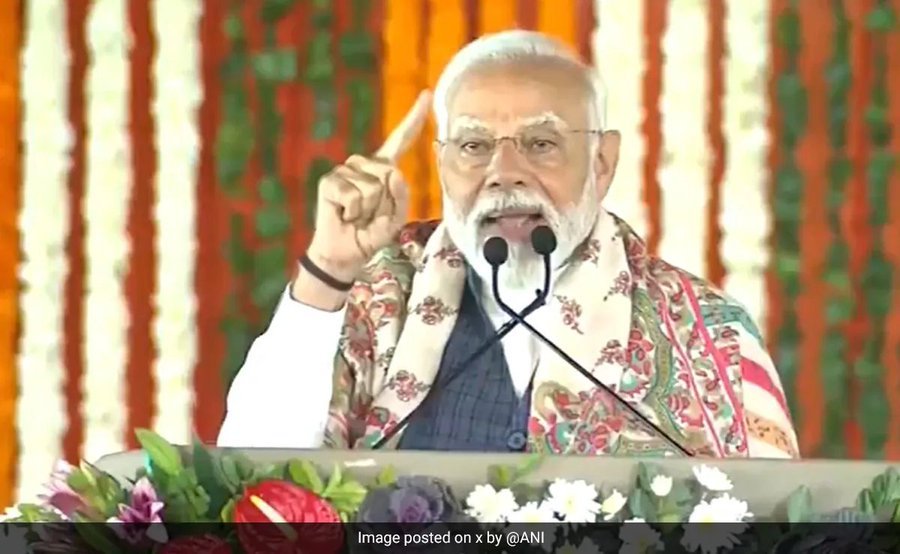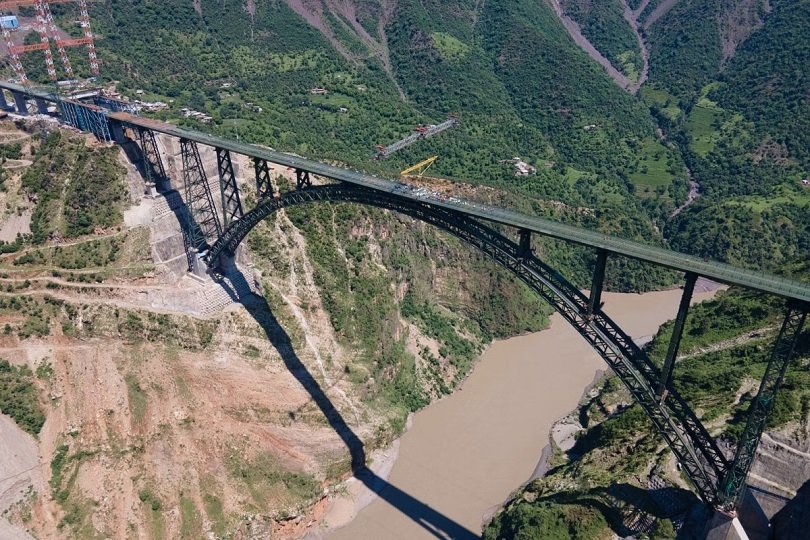New Delhi, February 21- The ambitious Udhampur-Srinagar-Baramulla Rail Link (USBRL) project in Jammu & Kashmir has emerged as a potent symbol of the new era of development and progress dawning in the long-troubled region.
Hailed by Prime Minister Narendra Modi on Monday as he inaugurated key components including the iconic Chenab Bridge, the Rs. 32,000 crore infrastructure initiative aims to connect the remote Himalayan areas with the Indian railway network and usher in socio-economic transformation.
#WATCH | Jammu: Prime Minister Narendra Modi says, “I have heard that a film on Article 370 is going to be released this week… It is a good thing as it will help people in getting correct information.” pic.twitter.com/FBe8yOFnPJ
— ANI (@ANI) February 20, 2024
In a rousing address at a rally in Jammu City, PM emphasized the shift from an era marred by violence, separatism and instability to a new age of all-round progress and prosperity. “Jammu & Kashmir has exited the era of bomb blasts and entered the age of development,” he declared, in an unmistakable reference to the troubled past and a promising new future.
Engineering Marvel Overcomes Formidable Terrain
The USBRL project represents a herculean engineering achievement in the face of formidable geographical and logistical challenges posed by the Himalayan terrain.
Engine and MEMU train trial on Khari – Sangaldan section of USBRL project in Kashmir valley. pic.twitter.com/6I6HhtEMKm
— Ashwini Vaishnaw (@AshwiniVaishnaw) February 14, 2024
Christened a “National Project” in 2002 by the Indian government, the 272 km rail link has been constructed at great cost and effort to provide seamless connectivity and open up the landlocked valley.
The 1.3 km long Chenab Bridge, soaring over 350 meters taller than the Eiffel Tower, is the crowning glory of this mega infrastructure initiative.
This world’s highest railway bridge will facilitate smooth, all-weather rail traffic even in the complex topography and extreme weather conditions that characterize the region.
Socio-Economic Transformation on the Anvil
Beyond its technological and engineering marvels, the USBRL promises to be a game-changer by scripting socio-economic transformation in Jammu & Kashmir.

Experts and government analysts project the improved connectivity will spur employment opportunities, boost tourism revenue, increase market access and bring tangible development to a region long bereft of progress and prosperity.
The Prime Minister’s words find resonance with this vision of inclusive development. As he said in Jammu, mega projects worth over Rs. 32,000 crore have been initiated in sectors spanning education, skills, employment, health, industry and infrastructure connectivity.
Jammu & Kashmir: A Longstanding Dream
The completion of this ambitious rail project also moves India closer to realizing the longstanding dream of an uninterrupted rail route from the Kashmir Valley in the Himalayas to Kanyakumari, the southernmost tip of the Indian peninsula. It finally links the region through the national rail network.
While the USBRL was first proposed over two decades ago in 2002, it got stuck in a quagmire of delays, red tape and security issues amid the tumultuous times then plaguing Jammu & Kashmir.

However, last week’s commissioning of the vital 48.1 km Banihal-Khari-Sumber-Sangaldan section marks a watershed with train services now operational on a significant portion of the route. The remaining Katra-Banihal section is slated for completion by late 2023.
Article 370: New Constitutional Reality on the Ground
The USBRL project encapsulates the hopes and aspirations of a new Jammu & Kashmir emerging in the aftermath of the revocation of the region’s semi-autonomous constitutional status under Article 370 in 2019.
In a transformative decision, PM abrogated Article 370 which granted special status to the erstwhile state of Jammu & Kashmir.
The move, which saw the controversial constitutional provision being done away with, was subsequently upheld by the Supreme Court of India in December 2023.
As Jammu & Kashmir transitions from a state to centrally-administered Union Territories of J&K and Ladakh, the rail project symbolizes the new era of integration and development the government envisions for the sensitive border region.
The development push also involves billions of rupees allocated for investments across crucial sectors spanning education, skills, health and industry to aid socio-economic uplift.
With visible progress emerging on the ground through infrastructure initiatives like USBRL, the Prime Minister’s words of J&K exiting its tumultuous past seem to be materializing into reality before the nation’s eyes.
Read about Kamal Nath’s Potential Defection to BJP












Comments 1